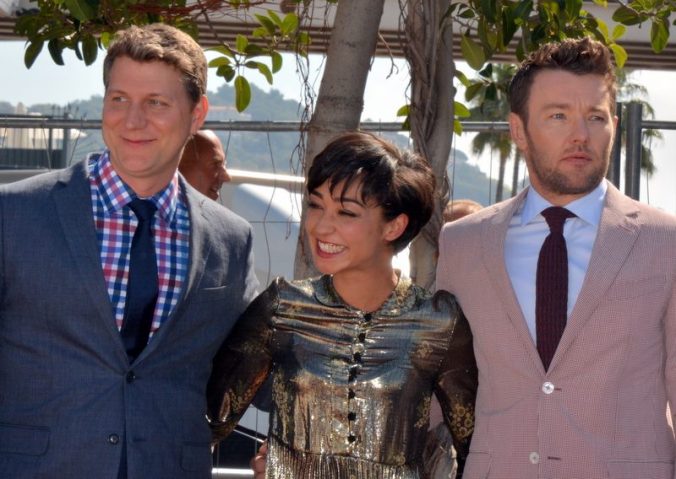My “day job” is a leadership role in the College of Fine Arts of a regional comprehensive university, so it should come as no surprise that I spent a few consecutive evenings soaking up various forms of artistic expression. Still, I find myself marveling a bit at the richness and diversity of what I’ve experienced in the past 100 hours or so.
On Wednesday evening I ventured just a couple of blocks off campus to a restaurant where there’s usually live music mid-week. In this case it was a talented local guitarist-singer that I’ve heard several times over the course of a couple of years. The burgeoning local music scene in our small city, situated in the midst of a fairly large rural region, has had a palpably salutary effect on livability for “creative class” types including educators, techies, scientists and engineers, health-care professionals, and entrepreneurs as well as writers and artists.
Thursday was a date I’d long anticipated. Some months ago I helped a professor from our Human Services Department find a space for a live performance, co-sponsored by his academic unit along with our Disability Services and Multicultural Affairs offices, of singer-songwriter-fiddler Gaelynn Lea. Ms. Lea became nationally known when she won the 2016 NPR Tiny Desk Concert competition, and she is also widely respected as a disability rights advocate. The eloquence of her songs and the unique poignancy of her performance style combined with her open-hearted, good-humored stage presence and articulate elucidation of disability pride to make a real difference in my consciousness. It was a modest event in a small recital hall, yet I left with the feeling that an encounter with Ms. Lea and her artistry was, in its way, life-changing.
On Friday I got to attend a full-length performance of our university’s dance students and faculty. Their program is not part of the college where I work; instead it’s located in the Kinesiology Department, a unit of the College of Education. Nevertheless, this was decidedly dance as art. The pieces were various but my favorites were the most explosive expressions of authentic emotion. Best of all was a closer, performed to the music that the student dancers respond to unprompted and unobserved, that seemed to be about the experience of living inside a youthful body that can barely contain its own exuberance.

Junko Chodos and one of her paintings
Last night was a gallery reception and talk by painter and collage artist Junko Chodos. Our downtown art center’s galleries are the most beautiful spaces in our city, and Ms. Chodos’ large-scale works had special impact in the elegant, bright void of the larger, downstairs gallery. She spoke of her “horrible” works, full of broken bones and broken motors, dark slashes and dead flowers, and of their creative origins in her childhood in war-torn Japan (where she was born in 1939), in a world haunted by fascism and terror. The big paintings are scary and strident; theirs is a dreadful beauty.
A friend convinced me to head out to the movies to see two of the nominees for a Best-Picture Oscar. We saw the opulently imaginative front-runner, The Shape of Water. It was produced, mostly written, and directed by the favorite for the Best Direction award, Guillermo del Toro. The rich tapestry created by all elements of the film, from the period production design and fervent acting to the deep hues in the cinematography and the fantastic yet sweetly humane storyline, provides ample rationale for his nomination.
But it was the other film, the exquisite Call Me By Your Name, that had the bigger impact. Its director, Luca Guadagnino, is not nominated for an Academy Award. No matter. The lovely Italian setting, the delicate truth of the leading performance by the prodigious Timothée Chalamet, the impeccable, insightful writing by novelist André Aciman and adapter James Ivory enchant, envelop and ultimately pierce the heart. If you ask me, Mr. Guadagnino deserves an award even if all he did was get out of the way of this effusion of romance, but that is not where I was headed with this post.
In fact, when I started with music and dance and visual art, I was going to ask, “What does any of this have to do with directing?” And my answer, of course, is “everything.”
My directing benefits from a stream of knowledge. It may take the form of experience, information, observation, wisdom, or intuition. Its most usefully concentrated form, though, may be art of any kind. Certainly I learn from other directors of dramatic stories, such as del Toro and Guadagnino, but with drama or without, music, visual art, dance, other performances, skillful writing of all kinds, and thoughtful discussion of all of it provide a “balanced diet” of material, techniques, and inspiration that keeps me alive, and maybe even creatively nourished, as a director.
I’m grateful for this week’s banquet.



![By Joanne Lévesque (Own work) [CC BY-SA 3.0 (http://creativecommons.org/licenses/by-sa/3.0)], via Wikimedia Commons](https://directorsvision.files.wordpress.com/2015/08/1024px-basilique_notre-dame_et_place_darmes.jpg?w=198&h=300)